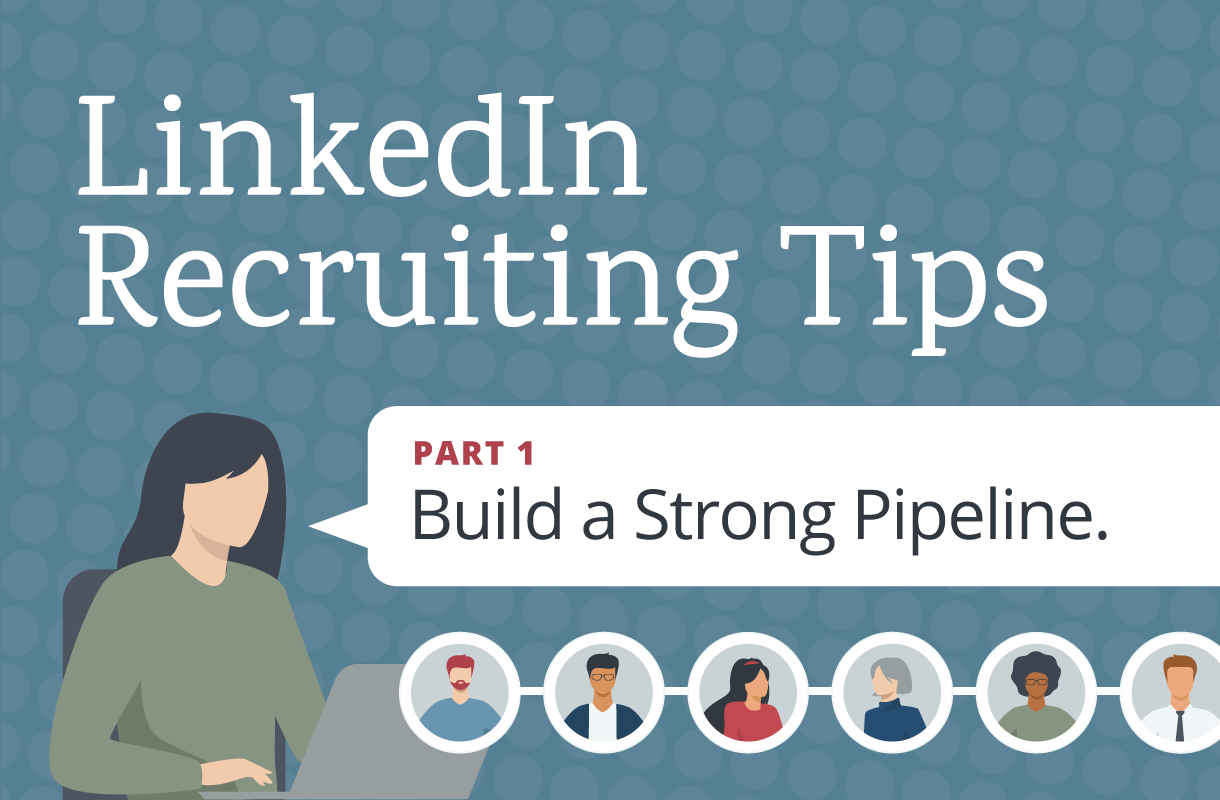In the recruiting world, LinkedIn is perhaps the most commonly used platform to connect with potential candidates and build up a recruiting pipeline. But how do you find the strongest candidates for the role you’re recruiting for? Our team of data science recruiters has developed some LinkedIn-specific best practices that allow us to find promising candidates, build up a strong pipeline, and get the most out of that LinkedIn Recruiter subscription.
At Dataspace, our philosophy for successful recruiting on LinkedIn is to:
Look at the candidate as a human, not just as a title or set of keywords.
So when using LinkedIn to build your pipeline, it’s important to be sensitive to how the keywords your using in your search will map to the actual candidates behind the profile.
With that in mind, here are our top tips for recruiters who are trying to optimize their LinkedIn pipeline:
1. Focus on one (or a couple) keywords and skills.
When creating a search, hone in on a small number of keywords and skills. If there’s a specific skill that is absolutely required, make it the only keyword and add other relevant skills in the skill section. We’ve found that search results can get cluttered pretty quickly if you have too many keyword inputs. Focusing on a small number of keywords and seeing what that search returns is a good place to begin a search. As you get a better feel for what’s out there, you can then better narrow your search to uncover more promising candidates for your pipeline.
2. Omit the job title in searches.
Job titles are not universally the same throughout different industries and companies, so leave it out to start with and then whittle down your returned results. The more specific and unique the role you’re working on, the more this will apply to you. Perhaps the Senior Platform Engineer role you’re working on can be filled by the Lead DevOps Engineer you just came across. Job titles are malleable, and it might be more helpful to focus on other aspects of a potential candidate’s profile.
3. Hide candidates that look familiar.
LinkedIn will often show the same candidate over multiple pages throughout your pipeline search. To circumvent this, if you’ve already looked at a candidate and have decided to pass on them, go ahead and hide them in your search- that way, they won’t show up again.
4. Look at comparable companies and industries.
This might be a bit obvious, but searching for similar companies or industries specific to the job you’re looking for is a good way to find some promising candidates with similar experiences and preferences for that industry or role. This can be helpful if you’re trying to whittle down an over-populated search. If you organize your search by a specific company, you might have a higher percentage of relevant candidates overall.
5. Change up the location.
If the position you’re looking to fill is remote, toggling through different locations is a good way to sift through a large candidate pool and find some strong candidates dispersed throughout the country. This practice can also be applied to hybrid or fully-onsite roles, but you’ll likely have better luck if you sort your candidates by people willing to move to that specific location.
6. Be thoughtful about location.
And speaking of onsite or hybrid roles, if you’re looking for candidates outside of the area, it’s more likely that you’ll find someone willing to move if they have a prior relationship with that area, or a specific reason to move there. One way to do this is by searching for candidates who have attended schools local to that region. We’ve found that people are frequently open to moving back to the area of their alma mater.
Use LinkedIn to build a pipeline of highly-qualified candidates.
There you have it! Give these tips a try the next time you build a candidate pipeline on LinkedIn. It will help you cut through the overwhelming pool of profiles to find the real candidates who are most likely to be receptive to your outreach.

